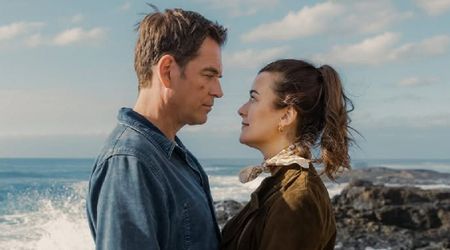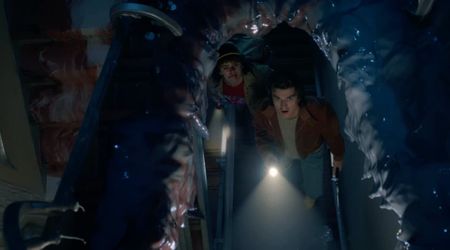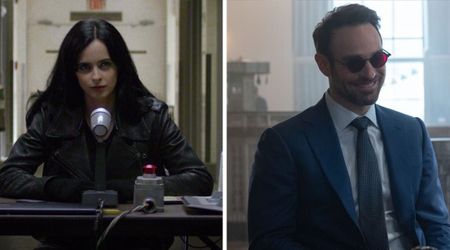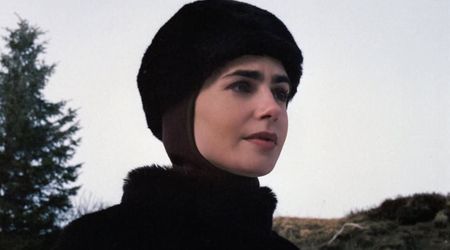'It's Okay to Not be Okay': A look at the folklore and fairytales that inspired Kim So-hyun, Seo Ye-ji show

Will Ko Mun-yeong, Moon Gang-tae and Moon Sang-tae get their happy ending and go on that much looked forward to trip in a camping car that Sang-tae still wants to buy? We don't know. With just two episodes left in 'It's Okay to Not be Okay', it's hard to think about weekends where we wouldn't be meeting Mun-yeong or watching out for antics. However, even as we get ready to bid a bittersweet adieu, it is also time appreciate some of the best things that this show gave to its fans. The first one being the presence of folklore and fairytale, not only referenced but also subverted to fit the current times.
Each episode is titled after the tale that the episode takes inspiration from or reflects the most. A few are portrayed as children's tales authored by Ko Mun-yeong, while a few are Korean folklore, there is also a Danish tale about a peasant called 'The Red Shoes', and the more globally popular ones such as 'Rapunzel and the Cursed Castle' and 'Beauty and the Beast' were also portrayed. However, it was in a way that we haven't experienced them before.
Take for instance, 'Beauty and the Beast'. It was interpreted as a story that forced the victim to fall in love with the Beast as he didn't let her escape. It was a case of Stockholm Syndrome, argues Mun-yeong as a part of her literature class for the patients of OK Psychiatric Hospital. When one of the patients who had always believed in the romanticized version of the tale disproves of Mun-yeong's understanding of the tale, she stresses that the Beast forced the beauty to adapt to a life where her best choice was to believe herself to be in love with him.
Take Rapunzel's tale for example, it is used to portray how abusive certain parents are with their children. Be it, the witch in Rapunzel who had the princess believe that she was the mother or Mun-yeong's actual mother in the show who mentally traumatized her daughter, this fairytale's dark side has inspired a huge part of the show. Even the scene of Mun-yeong getting the courage to cut her hair, and cut the leash that had all this while chained her to her scary mother is a reference to Rapunzel and also the tale of 'The Cheerful Dog'. The tale of the dog is how in the morning, despite being chained the dog wags its tail, with a droopy smile welcoming everyone to pet him. However, during the night, the dog wails and wails because of the loneliness that it feels. However, because it has been chained for years, it is unable to free itself by cutting off the leash and so continues to stay.
The next lovely inclusion is of the tale 'The King Has Donkey Ears'. The Korean tale dating back to the Silla Kingdom called 'Imgeumnim-ui Dangnagwi Gwi' is about a king who has ears shaped like that of a donkey. The only one who knows of his little problem is the royal crown maker for no one else has seen the king without his crown -- not even his queen. While the crown maker did keep the secret for a very long time, before his death, he wanted to unload this secret but also did not want to get caught and that is why he let it out as he stood amid a bamboo forest.
After keeping it in for all the years, when he does let it out finally, it bursts out like a torrent and it is this part of the tale that the show uses in a very decisive episode. In this episode, Sang-tae finally lets out all the buried feelings that he had about his brother out. His doubts about Kang-tae wanting him dead as a child, about him not wanting to belong to Sang-tae -- all of that bursts out and in the most heartbreaking manner. It is these kind of parallels that the show draws between each character's arc in the show vs. the tale that they choose.
Then there are tales that Mun-yeong has authored which are dark but stunning and tell very important stories that the children in today's society need to learn. Be it the 'Boy who Fed on Nightmares', or the 'The Hand, The Monkfish' -- the show uses live-action animation to tell the tale and draw us in. The former is of a boy who was limited by his nightmares while trying hard to forget about it. He gets his wish when a witch decides to remove the memories that gave him nightmares in return for his soul. However, without remembering the hardships, this boy grows up to become a man who is devoid of happiness. This tale's moral is to ensure that all of us do not forget the hard times, but remember it, face it head-on and overcome it to make our lives fuller. This is probably the only tale in the show that is referred to many times.
The use of literature in such a creative manner, collaborating different mediums to tell a story about the importance of mental health is one of the many brilliant things that Kim Soo-hyun and Seo Ye-ji's 'It's Okay to Not be Okay' as a show has managed to achieve.
The other titles that were portrayed include 'Ugly Duckling', 'The Father Of Janghwa and Hongryeon', 'The Girl Who Cried Wolf', 'Romeo and Juliet', 'Bluebeard's Secret', 'The Sleeping Witch' and 'Zombie Kid'. We cannot wait to see what the finale week episodes will portray.
'It's Okay to Not Be Okay' originally airs on tvN on Saturdays and Sundays at 9 pm KST in South Korea and can be streamed on Netflix.










